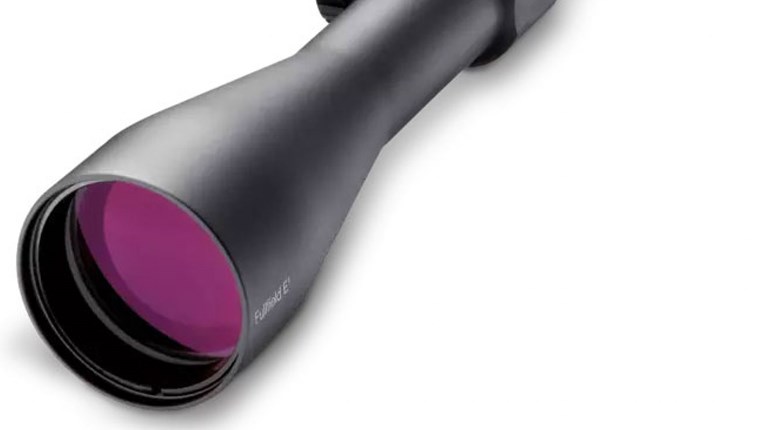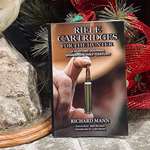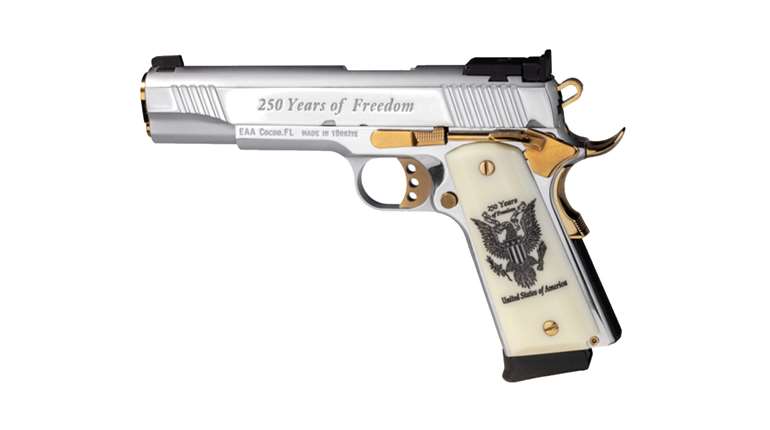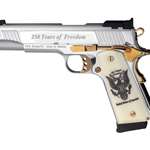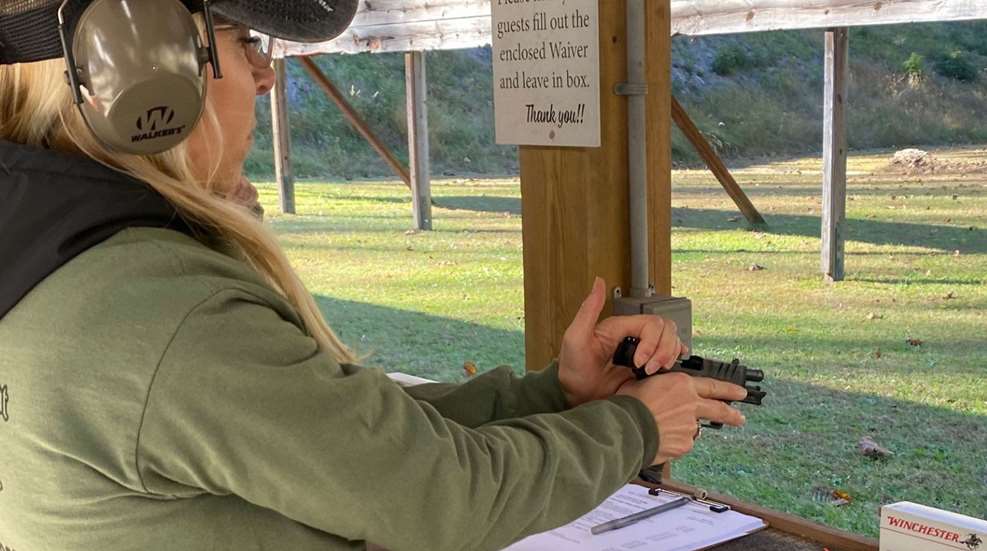
Shooters who are new to semiautomatic pistols often struggle with slide manipulation. Those of us with small hands or weak hands (I put myself in this group; I have weaker-than-average hands stemming from an autoimmune condition) especially might struggle. We watch other shooters work their guns so easily as if it’s nothing, but it’s rare that anyone actually teaches new shooters how to manipulate the slide. Much of the struggle will be smoothed out with time and practice—and breaking the gun in sometimes helps, too—but there are a few things to know that can shorten your learning curve.

New shooters generally struggle with three aspects of slide manipulation.
1. Racking the Slide
The slide is closed, there’s a cartridge in the chamber, and you need to run the slide to clear a jam or to expel that cartridge and ensure the gun is empty after you’ve dropped the magazine. Slides have different spring weights depending on the model of the gun, and some springs are heavier than others. If you’re struggling to work the slide because it feels too heavy for you to pull back, try these tips.
Use Your Whole Hand: Do not try to pinch the rear of the slide with your thumb and knuckle or forefinger. Rather, use your entire hand, because it’s much stronger. Put your support hand palm-side-down on top of the slide, with your thumb pointed to the rear. You might have to cup your hand a bit to fit over your red-dot optic, if you have one.
Push-Pull: Rather than simply trying to strong-hand the slide back, try pushing the gun forward while pulling the slide back. This uses the force of two hands/arms rather than one. Bring the gun closer to your body so your upper arms can apply force if needed, but be sure the gun remains pointed in a safe direction at all times. You can cant it if that feels better to you.
Let It Fly: When the slide comes back all the way, let it go so it can slam shut, hard. If you’ve been pushing the gun forward as part of this movement, you’ll probably continue to push it forward an inch or two—again, a safe direction is imperative. Do not “ride” the slide by keeping your hand on it as it goes forward. For one thing, slides are made to run hard under spring pressure, and if you soften that forward momentum, the slide might not go back into battery properly, and the gun won’t fire. For another thing, if you ride it too far forward with your hand over it, you could pinch your palm in the chamber as the gun closes—trust me, that hurts. The only exception to this is that 1911 models can potentially be damaged if their slides are slammed shut on an empty chamber, so most 1911 carriers will ease their slides forward in that case.
2. Closing the Slide
The slide is open and you want to close it, either for storage or because you just loaded a fresh magazine. There are two ways to do this:
Hit the Slide Release: There’s a little button that physically holds the slide open, and it’s located on the non-dominant side (left side for right-handed guns) about where a shooter’s thumb would rest. Just flick that button down with your thumb and the slide slams shut. Many trainers oppose this method as the primary way of closing your slide because the release size and specific location will vary from pistol to pistol, thus the familiarity with a gun’s controls will vary with each one you fire. Also, some of these buttons require a whole lot of pressure to close, and some of us have tiny hands that can’t reach the button comfortably. If that’s you…
Pull Back and Let Go: Using the same palm-down motion talked about above, pull back on the slide ever so slightly, which will release the slide lock, and let go. The slide will slam shut. This is my preferred method for several reasons. First, I have trouble putting enough pressure on the slide release with my thumb on some guns, and second, this method works on every model, so you don’t have to spend a moment finding the slide release on a new gun. Third and maybe most importantly, this is much more of a gross motor skill, while finding a tiny button with your thumb is more of a fine motor skill. Because fine motor skills deteriorate under stress (like a self-defense gun use), I take every opportunity I can to sub in a gross motor skill and train it.

3. Locking the Slide Back
This is the part I had the most trouble with when I was learning to shoot pistols. You want to open the gun and lock the slide back for whatever reason, most of which has to do with making it obvious that the gun is unloaded. I do this whenever the range goes cold and I set the gun down, and I do it any time I am handing someone a gun—it makes it clear at a glance that the gun is in a safe condition.
This is a funny movement that doesn’t come naturally. I had to learn a few tricks to master it, but once I got it one time, everything clicked, and I could do it on just about any gun after that without a problem.
Bring the Gun In: You’ll need some leverage for this, so bring the gun back—I usually end up with it tucked next to my right breast, always pointed in a safe direction. I often end up pivoting my body a bit to the right, so the gun remains pointed downrange while I am working it parallel to my body. I lock my right elbow against my right hip for more leverage.
Shift Your Hand: Even on sub-compact guns, I must break my firing grip to lock the slide back. Shift/pivot your strong-side hand on the gun so that the top rear of the grip is now pressing into the back of the bottom knuckle where your index finger meets your palm, rather than nestled in the crook of your thumb and forefinger. It’s sort of a rotating motion. Bring your thumb (bent) onto the slide release, and I usually must bring my index finger back onto the top of the grip, digging into the gun for leverage, keeping it well clear of the trigger guard. Now, push the gun forward with your strong hand while pulling the slide back with your weak hand, palm-side-down again. As you do that, push up on the slide release with your bent thumb. When the slide is back far enough, the slide release will engage, and you’re done.
Again, this is a tricky movement, and it might feel like you’ll never get it. Just keep practicing, and that hand-rotation trick will make a big difference.
The Cheat Code: The good news is that this skill is pretty much never needed in the heat of the moment—it’s something you do when shooting is over, so you won’t have to do it quickly under extreme stress. It’s an important skill to have and you should absolutely keep training until you get it right, but in the meantime, if you need to lock the slide back and you can’t operate the slide release lever, just drop the magazine, insert an empty one, and rack the slide. It will eject the cartridge that’s in the chamber and lock itself open, just like it does when you’ve fired your last round and the gun is empty.












